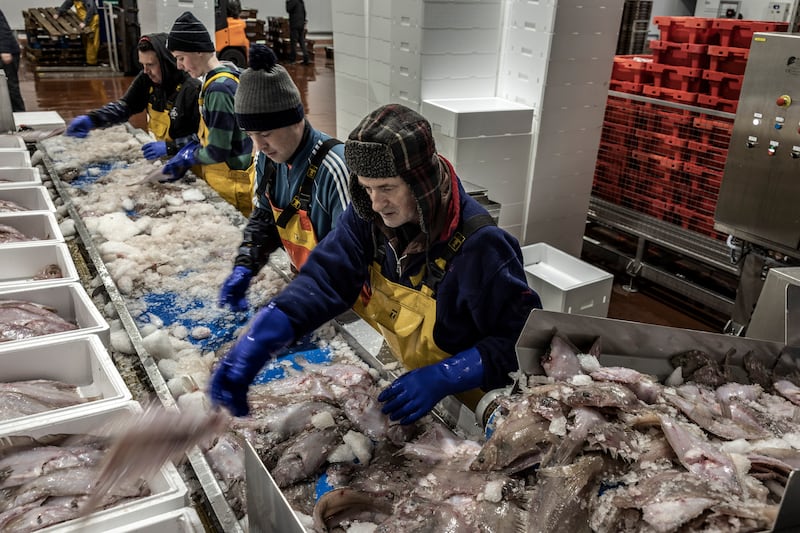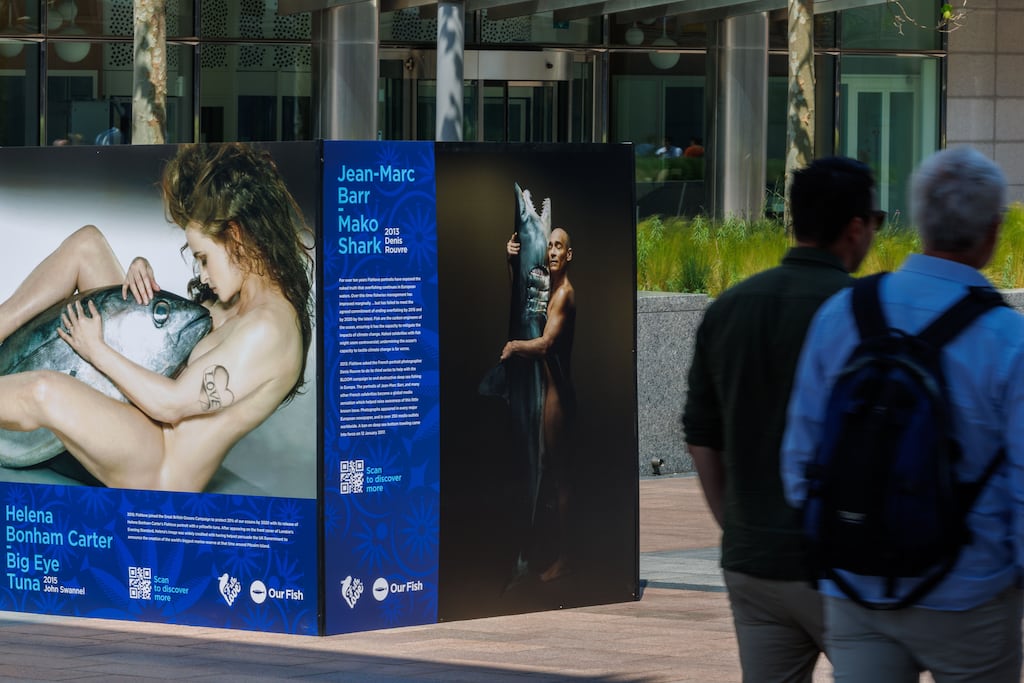Despite being 10 times our land area, the sea around Ireland gets very little attention within the broader debate on climate and biodiversity. Its role in regulating our climate, proving habitat for the most amazing creatures and as a valued amenity for those living near the coast has played second fiddle to the view that it is merely a source of “fish stocks” to support the fishing industry.
This, in turn, has been governed by the EU’s Common Fisheries Policy (CFP) which, since the most recent reform in 2013, has placed greater emphasis on sustainability, particularly by ending overfishing and the dumping of unwanted catches, both of which were to have ended by 2020.
Nevertheless, according to the International Council for the Exploration of the Seas (ICES, the principal body for providing scientific advice for fishing activity in the waters around Europe) “fishing continues to be the main threat to ecosystem health”.
Indeed, an assessment published this summer from OSPAR, an international treaty for the protection of the North Atlantic to which Ireland is a signatory, provides little cause for cheer, noting that “collective trends point to declining biodiversity and continued habitat degradation”. They point to a “decreasing trend” in plankton in the waters around Ireland, the very basis of the food chain, while the status of fish, sea birds, whales and dolphins is “not good”.
READ MORE
Fishing impacts the marine environment not only through the removal of species being targeted by the fishing boats, but also through the removal of non-target species (also known as “by-catch”, which can include anything from other fish to dolphins) and effects to the seafloor, especially through fishing methods such as bottom trawling or dredging. ICES says that “fishing-induced physical disturbance” can decrease the quantity of invertebrate life by “over 80 per cent in the most heavily fished areas”.
The practice of removing more of the target fish than is recommended by the scientists is referred to as “overfishing” and while overfishing has reduced in recent years, it nevertheless persists for a number of fish populations, such as herring, cod and whiting.
How scientists have decided how many fish can be taken from a given population is based upon a concept of “maximum sustainable yield” (MSY), an idea which began to be applied to fisheries in the 1940s and which theoretically maintains a stable fish population while removing as much as possible every year for commercial purposes.

MSY is now a legal obligation in the EU and achieving this goal has somehow become synonymous with the idea of “sustainable fishing”. Since its conception, however, it has been criticised as “policy camouflaged as science” and since it was never developed as a tool for protecting ecosystems, is it now time that it be retired from use?
Ciaran Kelly is the director of fisheries ecosystem and advisory services at the Marine Institute headquartered in Oranmore, Galway. He stresses that MSY is just one of a number of tools to achieve desired outcomes and that “the principles and mechanics of MSY are about optimisation” of the resource (ie the fish or invertebrate species being exploited). “People think that because MSY has the sustainability thing in it that that’s the only level of fishing that’s sustainable”. He maintains that the terminology that is used is often misunderstood, confounding ideas in the public mind about what is best from an environmental, as opposed to an economic perspective.
“Here’s the horror of where we’ve ended up with and the way we use words ... overfishing is technically sustainable”, meaning that it’s possible to go on taking too many fish even if it is not maximising the commercial return for fishing.
MSY “has real world limitations” he adds, including that it “looks at an individual single fish stock”, while in reality no fish species exists in isolation from its surrounding environment. Principal among these is the complexity in natural ecosystems which collides with a system of exploitation designed to prioritise profit. “If you were to start now from a clean sheet you might try a more ecosystem-based approach”, Kelly adds.
This idea, which would prioritise the health of the ecosystem over the interests of the fishing industry is not new, indeed it became a requirement of fisheries management within the CFP when it was last reformed in 2013. However, it has found few champions at a political level and, like many of the environmental objectives that were welcomed by environmental campaigners over a decade ago, it remains largely unimplemented.
Tobias Troll is marine policy director with Seas At Risk, a Brussels-based NGO. He thinks that enshrining MSY in law was a “considerable achievement at the time” given that there was little in place before its adoption, but also notes its failings.
“Even if fishing quotas are supposed to follow scientific advice and MSY the reality is often not the case”, noting that in the Baltic Sea, for instance, advice for zero catches of some species has been ignored, leaving that water body “increasingly empty of fish”.
“We also know that MSY is not enough to deliver the kind of resilient, biodiverse, rich ecosystems we not only want because we like nature so much, but which we also need so much as the ocean is our greatest ally in fighting climate change. The more dysfunctional ecosystems we have, the less the ocean can play that role as an ally in climate chaos mitigation.”
He agrees with Kelly that MSY has too much focus on single species which he adds “is not how nature works”. Given a choice he would not use MSY which he says is simply a tool to deliver for an extractive industry. He points to alternatives that have been implemented in small stretches of the Spanish Mediterranean coast where local knowledge is helping to regenerate the sea, not only take from it.
The Irish Government has committed to protecting 30 per cent of our seas in Marine Protected Areas by 2030
Troll insists that small-scale fisheries tied to local areas are essential players in developing better models of ocean management as they are “rooted in a logic of stewardship”. However, he asserts that “it’s difficult if not impossible to combine an ecosystem-based approach and MSY. If your priority is to fish to the maximum then you are not considering the ecosystem as a whole”.
Despite the reforms of the CFP, politicians tend to see the task of protecting marine biodiversity as entirely separate from that of managing commercial fisheries. However, a new study led by the University of Paris, France, and published in the journal Conservation Letters, indicates that merging these objectives could result in better outcomes for both. They looked at the creation of Marine Protected Areas (MPAs), a sort of nature reserve at sea, and how they can be used to produce more fish for commercial exploitation.
What they found is simultaneously counter intuitive but entirely logical, concluding that spatial management, ie the use of MPAs in managing commercial fisheries, outperformed traditional methods. Furthermore, the results improve with the level of protection afforded, peaking with the creation of MPAs where no fishing at all is permitted.
They noted that their “most compelling result is that protection level and time matter not only for conservation outcomes but also for fisheries outcomes” and that significant results could be seen “after a few years”. This is an important finding as although it has been well documented that ending all fishing activity within an MPA produces the best results for biodiversity, this now shows that it creates the best results for the fishing community also, since the burgeoning fish and invertebrate life, as well as their larvae, spill over into areas where fishing is permitted.
The Irish Government has committed to protecting 30 per cent of our seas in MPAs by 2030 however publication of legislation to allow for this has been repeatedly delayed while there is a reluctance to include legal provision for even 10 per cent to be “strictly protected”, ie off-limits to fishing activity. This is likely due to the continued belief that protecting biodiversity will come at the expense of the fishing industry. In reality, there can be no fishing industry without strong restoration measures for biodiversity. The evidence for a new approach to managing the sea continues to pile up.
- Sign up for push alerts and have the best news, analysis and comment delivered directly to your phone
- Find The Irish Times on WhatsApp and stay up to date
- Our In The News podcast is now published daily – Find the latest episode here











